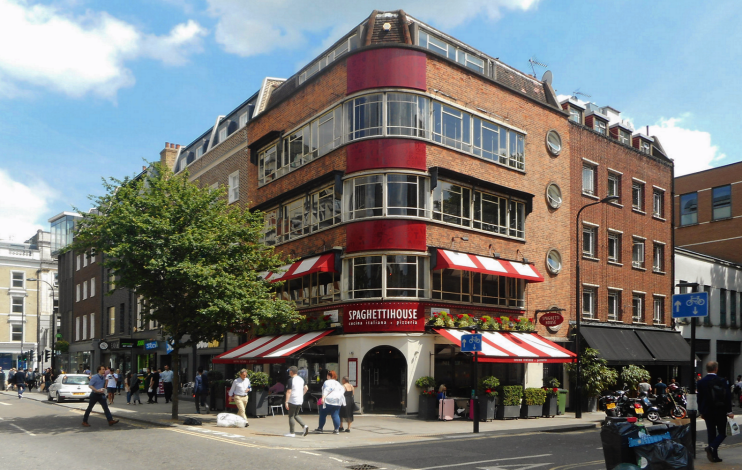Goodge Street
Goodge Street, Camden
Like nearby Warren Street, Goodge Street is better known as the name of a tube station than as a thoroughfare in Fitzrovia, where it branches westwards off Tottenham Court Road and soon becomes Mortimer Street

John Goodge obtained Crab Tree Field by marriage in 1718 and his sons Francis and William developed the land from around 1746 onwards.
When the Northern Line station opened in 1907 it was at first named Tottenham Court Road, while the stop to its south was called Oxford Street. Within a year the company changed its mind and gave the two stations their present names.
During the Second World War the government built a deep shelter linked to Goodge Street station, part of which was made available to General Eisenhower as his operational headquarters for D‑Day. After the war the army used the shelter as a transit centre until it was damaged by fire in 1956.
In the mid-1960s some of Goodge Street’s cafes gained a reputation as hang-outs where illicit substances might be obtained. Donovan’s ‘Sunny Goodge Street’ was one of the first pop songs to explicitly mention drug-taking. Judy Collins, Marianne Faithfull and Paul McCartney later recorded cover versions. For a while, Goodge Street’s name became emblematic of the ‘stoned’ hippie lifestyle, even rating a mention on the American cop show Hawaii Five‑O.
On the southern corner of Goodge Street and Tottenham Court Road property developer Dukelease has renovated five existing buildings and an untouched void to create 13 apartments and penthouses, some of which are visible on the left in the photo above. The Artisan development won the top prize at the Evening Standard’s New Homes Awards in 2016.
The surrounding area is now known for its electronics retailers, nearby academic institutions and the art galleries of Windmill Street. Scala Street boasts the delightful Pollock’s toy museum.
Postal district: W1
Station: Northern line (zone 1)
